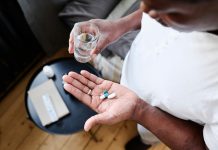
In a recent study, UCLA researchers found a new way to activate the stem cells in the hair follicle to make hair grow.
The study may lead to new drugs that could promote hair growth for people with baldness or alopecia.
Alopecia is hair loss associated with such factors as hormonal imbalance, stress, aging or chemotherapy treatment.
Hair follicle stem cells are long-lived cells in the hair follicle; they are present in the skin and produce hair throughout a person’s lifetime.
They are “quiescent,” meaning they are normally inactive, but they quickly activate during a new hair cycle, which is when new hair growth occurs.
The quiescence of hair follicle stem cells is regulated by many factors. In certain cases, they fail to activate, which is what causes hair loss.
In the current study, the researchers showed that hair follicle stem cell metabolism is different from other cells of the skin.
Cellular metabolism involves the breakdown of the nutrients needed for cells to divide, make energy and respond to their environment.
The process of metabolism uses enzymes that alter these nutrients to produce “metabolites.”
As hair follicle stem cells consume the nutrient glucose—a form of sugar—from the bloodstream, they process the glucose to eventually produce a metabolite called pyruvate.
The cells then can either send pyruvate to their mitochondria—the part of the cell that creates energy—or can convert pyruvate into another metabolite called lactate.
The research team first blocked the production of lactate genetically in mice and showed that this prevented hair follicle stem cell activation.
Conversely, in collaboration with the Rutter lab at the University of Utah, they increased lactate production genetically in the mice and this accelerated hair follicle stem cell activation, increasing the hair cycle.
The team identified two drugs that, when applied to the skin of mice, influenced hair follicle stem cells in distinct ways to promote lactate production.
The first drug, called RCGD423, activates a cellular signaling pathway called JAK-Stat, which transmits information from outside the cell to the nucleus of the cell.
The research showed that JAK-Stat activation leads to the increased production of lactate and this, in turn, drives hair follicle stem cell activation and quicker hair growth.
The other drug, called UK5099, blocks pyruvate from entering the mitochondria, which forces the production of lactate in the hair follicle stem cells and accelerates hair growth in mice.
The use of RCGD423 to promote hair growth is covered by a provisional patent application filed by the UCLA Technology Development Group on behalf of UC Regents.
The use of UK5099 to promote hair growth is covered by a separate provisional patent filed by the UCLA Technology Development Group on behalf of UC Regents, with Lowry and Christofk as inventors.
The experimental drugs described above were used in preclinical tests only and have not been tested in humans or approved by the Food and Drug Administration as safe and effective for use in humans.
The research is published in the journal Nature Cell Biology.
Copyright © 2019 Knowridge Science Report. All rights reserved.



